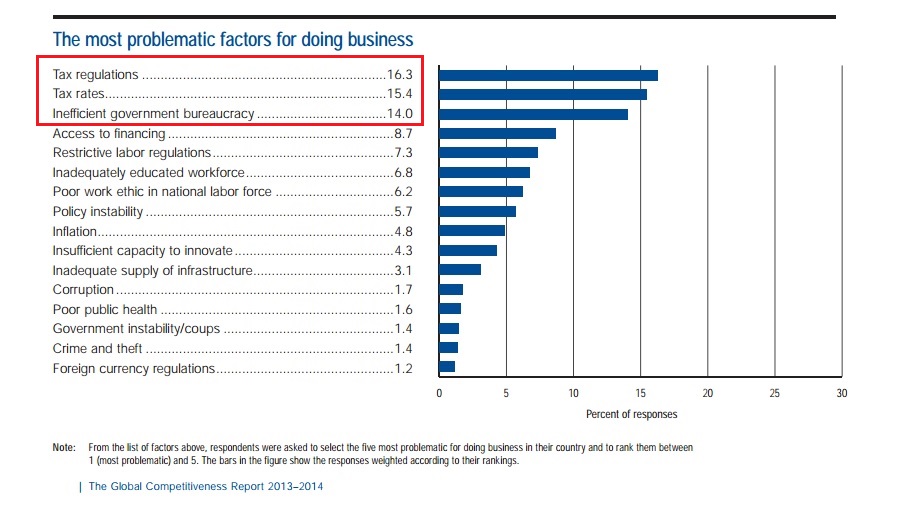I was recently revisiting some of the research by economist Thomas C. Leonard of Princeton University on eugenics and economics during the Progressive Era. Leonard is currently working on a book entitled Excluding Inferior Workers: Eugenic Influences on Economic Reform in the Progressive Era. I had nearly forgotten about the excellent slide-show he produced for his book’s research. For those who have an interest in economic history–especially the Progressive Era’s influence on America’s economic thinking–these slides are definitely worth reading.
Economics
The Night of the Living Dead
Last year, I posted a piece at The Slow Hunch on Black Friday. Does the post-Thanksgiving binge represent the most base form of materialism? Maybe not (at least not completely). Check out my post to see why.
Good News, Pope Francis
The media has exploded over Pope Francis’ recent apostolic exhortation. In it, he denounced social and economic inequality, which he declared are “the result of ideologies which defend the absolute autonomy of the marketplace and financial speculation” and “trickle-down theories.”[ref]Economist Thomas Sowell has claimed, “No such theory [i.e. trickle-down] has been found in even the most voluminous and learned histories of economic theories…Yet this non-existent theory has become the object of denunciations from the pages of the New York Times and the Washington Post to the political arena…It is a classic example of arguing against a caricature instead of confronting the argument actually made.” (Sowell, “Trickle-Down” Theory and “Tax Cuts for the Rich”. Stanford: Hoover Institution Press, 2012, 1-2.)[/ref] The media hailed it as an anti-capitalist proclamation, while virtually ignoring other important factors like his attack on abortion.[ref]”Among the vulnerable for whom the Church wishes to care with particular love and concern are unborn children, the most defenceless and innocent among us. Nowadays efforts are made to deny them their human dignity and to do with them whatever one pleases, taking their lives and passing laws preventing anyone from standing in the way of this. Frequently, as a way of ridiculing the Church’s effort to defend their lives, attempts are made to present her position as ideological, obscurantist and conservative. Yet this defence of unborn life is closely linked to the defence of each and every other human right. It involves the conviction that a human being is always sacred and inviolable, in any situation and at every stage of development. Human beings are ends in themselves and never a means of resolving other problems. Once this conviction disappears, so do solid and lasting foundations for the defence of human rights, which would always be subject to the passing whims of the powers that be. Reason alone is sufficient to recognize the inviolable value of each single human life, but if we also look at the issue from the standpoint of faith, “every violation of the personal dignity of the human being cries out in vengeance to God and is an offence against the creator of the individual”. Precisely because this involves the internal consistency of our message about the value of the human person, the Church cannot be expected to change her position on this question. I want to be completely honest in this regard. This is not something subject to alleged reforms or “modernizations”. It is not “progressive” to try to resolve problems by eliminating a human life. On the other hand, it is also true that we have done little to adequately accompany women in very difficult situations, where abortion appears as a quick solution to their profound anguish, especially when the life developing within them is the result of rape or a situation of extreme poverty. Who can remain unmoved before such painful situations?” (#213-214)[/ref] While some are seeing Francis’ remarks as radical, it is virtually the same message found in, say, the exhortations of John XXIII (1961) or Leo XIII (1891). This just reinforces Nathaniel’s point in his post “Meet the New Catholicism, Same as the Old Catholicism.”
But I have some good news for Pope Francis and the media: things have been getting better for some time. The world isn’t quite on its way to hell in a handbasket. Furthermore, it was the “autonomy of the marketplace” that achieved one of the major Millennium Development Goals of halving global poverty five years early. And as I’ve noted before, global inequality is actually decreasing. A brand new study supports past research by demonstrating that–though inequality is still high and increasing within countries (not just in America)–global inequality has seen an unprecedented decline.
(Above graph provided by GMU’s Robin Hanson)
This is not to say that all is well. There is much, much more to be done. But these are positive trends; trends that caused one journalist to declare 2012 (at the dawn of 2013) the best year ever. We have seen incredible progress over the past couple centuries. If we want to address social ills like those Pope Francis spoke of, we should look to those policies (and yes, ideologies) that have made these positive trends possible.
The Tea Party Fights The Man
The Tea Party does not have a lot of friends in Washington. Conventional wisdom–the sort of thing you hear on NPR, for example–is that the GOP has redistricted itself to death. By creating solid red districts, they’ve turned over power to the loonies on the fringe. Complementary theories include the notion that the Tea Party consists of a bunch of delusional fools who are shoveling their hard earned life-savings to snake oil selling PACs who have no interest in making real changes, but just want to make a buck off of gullible fools.
Both of these narratives tap into deep political stereotypes, but neither actually make much sense. The problem with the gerrymandering explanation is that it’s the opposite of how gerrymandering actually works. Not that I’m defending redistricting games, but the essence of gerrymandering is called “packing and cracking“, and it means you pack your opposition into dense, homogeneous districts but you crack (spread out) your own supporters as much as possible. Think about it for a minute, if you’ve got 5 districts and the overall population is basically 50/50 Democrat and Republican, do you (as a Republican) want to put all of your voters in one dark red district and leave the Democrats to have 4 very slightly blue districts? No: that’s how you lose an election, not how you win it. The idea that the GOP created a bunch of ultra-conservative districts doesn’t make any sense.
Meanwhile, the idea of the huckster political operative taking grandma and grandpa’s money to go off on a doomed crusade to end Obamacare taps nicely into images of televangelist faith healers (i.e. negative stereotypes of the religious right) and the influential What’s the Matter With Kansas?, but all it really does is expose liberal arrogance. The idea is that conservatives are just too darn stupid to know what’s good for them (i.e. liberal policies) when the reality is that conservatives have different values than liberals. For example, conservatives believe that passing on staggering amounts of debt to their children is morally reprehensible and are willing to sacrifice their own interests to stop it.
But is this just spin? Nope, it turns out there are some pretty hard numbers behind this. I got tipped off to that fact when a Facebook friend posted this Washington Times opinion piece: Tea Party Loosens K Street’s Stranglehold on the GOP. The thesis of the article is pretty simple: before the Tea Party, Republican candidates depended on cash from big business and lobbyists to run their campaigns. But a proliferation of ideological PACs provided an alternative source of funds separate from the interests of big business. Carney, who wrote the piece, concludes that Tea Party candidates are therefore getting their money from small business owners and retirees: individuals.
I don’t think the article backs this up solidly, but the same friend who posted it followed it up with this:
Perverse Incentives: Government Shutdown Edition
A friend on Facebook posted this quote from Thomas Sowell:
Back in my teaching days, one of the things I liked to ask the class to consider was this: Imagine a government agency with only two tasks: (1) building statues of Benedict Arnold and (2) providing life-saving medications to children. If this agency’s budget were cut, what would it do?
The answer, of course, is that it would cut back on the medications for children. Why? Because that would be what was most likely to get the budget cuts restored. If they cut back on building statues of Benedict Arnold, people might ask why they were building statues of Benedict Arnold in the first place.
He didn’t specify, but he didn’t have to: he’s talking about the political efforts to make the government shut down as painful as possible in order to score points for Democrats. Look: I can’t get all outraged about politicians playing politics. It’s what they do, and we’d be kidding ourselves to think otherwise. But I do think it’s important to try and keep a level head and track what’s really going on.
And here’s the story: in prior government shut downs the parks and memorial services have not been forcibly barred against visitors. Now? They are. The Obama administration is spending more money than would be spent on regular operations to add additional law enforcement and barricades to do things like preventing World War II vets from visiting their own memorial in the hopes that everyone will blame the Republicans. Well: the Republicans sure helped the shutdown along. But during Clinton-era shutdowns the Democratic President didn’t feel the need to spend supposedly non-existent federal dollars to prevent World War II vets from, for example, continuing to give tours at Pearl Harbor. (Daily Caller)
The Importance of Economic Freedom in 6 Graphs
The Fraser Institute recently released its Economic Freedom of the World: 2013 Annual Report, which reveals the continual decline of the U.S. (#2 in 2000, now #17). Some may object to the term “economic freedom,” seeing it only as a pretty-sounding Trojan Horse for the evil bourgeois system of capitalism.
Guess what: it is.
But rhetoric is important (as economist Deirdre McCloskey has explained) and “economic freedom” is, in my view, a more accurate description. And far from living up to its caricature (i.e. a system of power and greed that exploits the poor), economic freedom–as shown by the graphs below–does more to raise the living standards of all involved, rich and poor alike, than any other economic system yet discovered. Descriptions are at the bottom of the graphs.
I…Coffee?
Another interesting addition to my past “I, [Insert Item Here]” posts:
For instance, even the relatively simple GVC [global value chain] of Starbuck’s (United States), based on one service (the sale of coffee), requires the management of a value chain that spans all continents; directly employs 150,000 people; sources coffee from thousands of traders, agents and contract farmers across the developing world; manufactures coffee in over 30 plants, mostly in alliance with partner firms, usually close to final market; distributes the coffee to retail outlets through over 50 major central and regional warehouses and distribution centres; and operates some 17,000 retail stores in over 50 countries across the globe. This GVC has to be efficient and profitable, while following strict product/service standards for quality. It is supported by a large array of services, including those connected to supply chain management and human resources management/development, both within the firm itself and in relation to suppliers and other partners. The trade flows involved are immense, including the movement of agricultural goods, manufactured produce, and technical and managerial services.[ref]From economist David Henderson at EconLog. Quoting the UNCTAD World Investment Report 2013, pg. 142.[/ref]
The Bet
There was a review in The Wall Street Journal last week of the new book The Bet: Paul Ehrlich, Julian Simon, and Our Gamble Over Earth’s Future, which covers the Simon-Ehrlich wager (you know, the one where population doomsdayer Paul Ehrlich lost to economist Julian Simon regarding the dropping price of commodities). As the WSJ explains,
Mr. Ehrlich was allowed to select the five commodities that would be the yardstick…As they settled on their terms, Mr. Sabin notes, Messrs. Ehrlich, Holdren and Harte “felt confident that they would prevail.” They didn’t. In October 1990, Mr. Ehrlich mailed a check for $576.07 to Simon…Although world population had increased by 800 million during the term of the wager, the prices for the five metals had decreased by more than 50%. And they did so for precisely the reasons Simon predicted—technological innovation and conservation spurred on by the market.

Ehrlich’s reaction to the lost bet is instructive:
Mr. Ehrlich was more than a sore loser. In 1995, he told this paper: “If Simon disappeared from the face of the Earth, that would be great for humanity.” (Simon would die in 1998.) This comment wasn’t out of character. “The Bet” is filled chockablock with Mr. Ehrlich’s outbursts—calling those who disagree with him “idiots,” “fools,” “morons,” “clowns” and worse. His righteous zeal is matched by both his viciousness in disagreement and his utter imperviousness to contrary evidence. For example, he has criticized the scientists behind the historic Green Revolution in agriculture—men like Norman Borlaug, who fed poor people the world over through the creation of scientific farming—as “narrow-minded colleagues who are proposing idiotic panaceas to solve the food problem.”
Mr. Sabin’s portrait of Mr. Ehrlich suggests that he is among the more pernicious figures in the last century of American public life. As Mr. Sabin shows, he pushed an authoritarian vision of America, proposing “luxury taxes” on items such as diapers and bottles and refusing to rule out the use of coercive force in order to prevent Americans from having children. In many ways, Mr. Ehrlich was an early instigator of the worst aspects of America’s culture wars.
When it comes to political disagreements, try a little more evidence and a little less name-calling.
U.S. Competitiveness
The World Economic Forum recently released their latest Global Competitiveness Report and after years of decline the US finds itself back in the top five at…#5. This time around, America falls behind Germany (#4), Finland (#3), Singapore (#2), and Switzerland (#1). Gains over the Netherlands and Sweden provide reason to hopeful. What stands out, however, are the things that the survey identifies as America’s biggest hindrances to competing in the global economy: tax regulations (the US was #69 in “Paying Taxes” in the World Bank’s Doing Business rankings), tax rates, and inefficient government.

Food for thought.
The Decline of France
This article is over a week old, but still relevant. Part of the subtext of the broad left vs. right dichotomy in America politics is the whole question: should we follow the European model or not? Of course there isn’t just one “European” model, but France is often held up as an exemplar of what to do by the left (socialized healthcare) and also what not to do by the right (overbearing labor regulation).
In either case, the fate of France is of interest, and this article describes the grim reality.
At stake is whether a social democratic system that for decades prided itself on being the model for providing a stable and high standard of living for its citizens can survive the combination of globalization, an aging population and the acute fiscal shocks of recent years
These are high stakes indeed.






